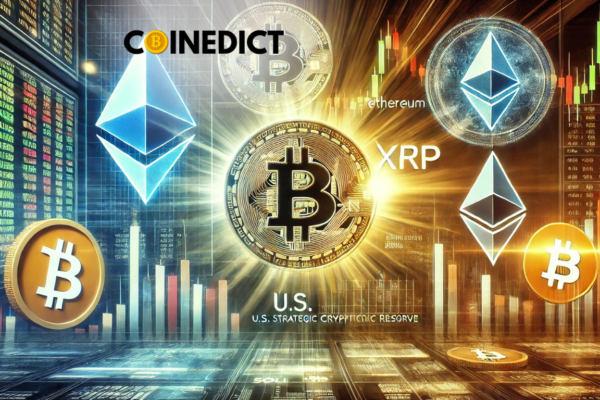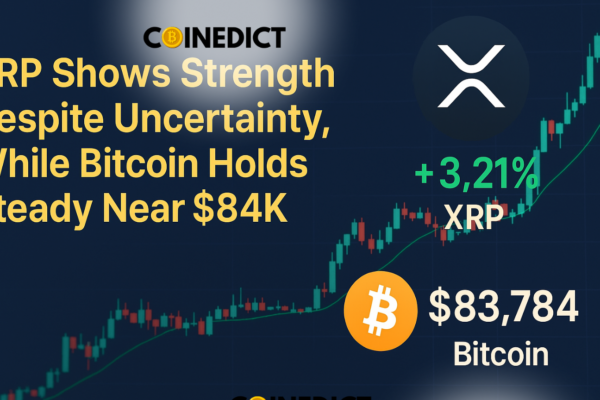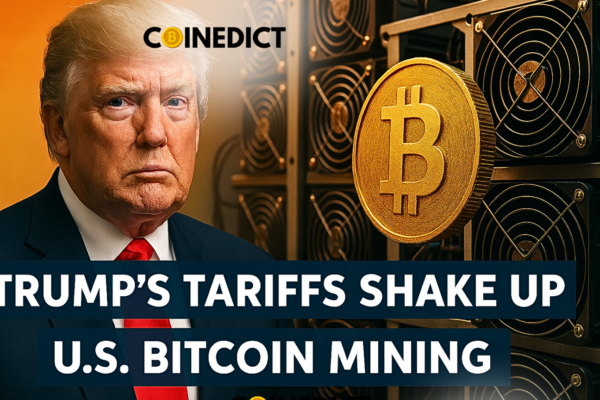
Fartcoin Defies the Odds, Jumps 50% While the Rest of Crypto Tanks
While most of the crypto market is in panic mode this week, one unlikely token is stealing the spotlight — Fartcoin. Built on the Solana blockchain and known more for memes than serious fundamentals, this playful coin has skyrocketed nearly 50% this week, proving once again that crypto can be full of surprises. Despite a brutal sell-off triggered by Trump’s global tariffs — which wiped out over $180 billion from the overall market — Fartcoin has been on a roll. In the past 48 hours alone, it’s gained over 22%, and it shows no signs of slowing down. What’s really interesting is how it’s gaining. Unlike many tokens that rely on big players (whales) to push prices around, Fartcoin’s rally is almost entirely retail-driven. On-chain data confirms that there’s been very little large-scale movement. Instead, everyday traders and online hype are fueling the momentum — no shady pump-and-dumps here. From a chart perspective, things look bullish too. Fartcoin recently broke out of a classic “inverse head-and-shoulders” pattern — a setup traders often watch for major reversals. This pattern now hints that Fartcoin could surge toward $1.92 in the coming weeks, maybe even by May. Of course, it’s not all smooth sailing. The price is hovering near a key level around $0.59, which has acted like a ceiling in the past. If Fartcoin can’t stay above it, some traders worry it could form a “double top” — a bearish sign that might pull the token back down to the $0.30–$0.35 range. But for now? Fartcoin is riding high, and in a market full of fear and red candles, this cheeky memecoin is offering a breath of fresh air (pun fully intended).













 Thailand’s Crypto Mindset: Open to Growth, Cautious on Payments Here’s how Thailand looks at it: Crypto is an investment tool, not a way to pay for your groceries. The Bank of Thailand has made it clear that using crypto for everyday payments isn’t allowed — the price swings are just too wild, and they could shake up the country’s financial system. But when it comes to blockchain tech and trading crypto in a controlled environment? That’s totally encouraged — as long as the right rules are followed.
Thailand’s Crypto Mindset: Open to Growth, Cautious on Payments Here’s how Thailand looks at it: Crypto is an investment tool, not a way to pay for your groceries. The Bank of Thailand has made it clear that using crypto for everyday payments isn’t allowed — the price swings are just too wild, and they could shake up the country’s financial system. But when it comes to blockchain tech and trading crypto in a controlled environment? That’s totally encouraged — as long as the right rules are followed.  Who’s in Charge of What? Thailand has a few key players in its crypto game plan: They work together to make sure the space is safe and transparent.
Who’s in Charge of What? Thailand has a few key players in its crypto game plan: They work together to make sure the space is safe and transparent.  How It All Started Thailand didn’t just wake up one day and decide to regulate crypto. This has been a years-long process: It’s been a step-by-step journey, but a pretty forward-thinking one.
How It All Started Thailand didn’t just wake up one day and decide to regulate crypto. This has been a years-long process: It’s been a step-by-step journey, but a pretty forward-thinking one.  Rules for Crypto Businesses Want to run a crypto exchange in Thailand? You’ll need to:
Rules for Crypto Businesses Want to run a crypto exchange in Thailand? You’ll need to:  Crypto & Taxes in Thailand Yes, crypto gains are taxed. The more you earn, the higher the rate — up to 35%, based on your income. Some transactions (like on licensed exchanges) get VAT exemptions, but most people still need to report their earnings.
Crypto & Taxes in Thailand Yes, crypto gains are taxed. The more you earn, the higher the rate — up to 35%, based on your income. Some transactions (like on licensed exchanges) get VAT exemptions, but most people still need to report their earnings.  ICOs, NFTs & DeFi — Where Do They Stand? It’s a work in progress — and the government’s taking its time to get it right.
ICOs, NFTs & DeFi — Where Do They Stand? It’s a work in progress — and the government’s taking its time to get it right.  Thailand’s Big Move: A Digital Currency of Its Own Thailand is working on its very own digital currency — kind of like a crypto version of the Thai baht. It’s already been tested for things like retail shopping and even cross-border payments with other countries. The goal? To make money transfers faster, cheaper, and more secure.
Thailand’s Big Move: A Digital Currency of Its Own Thailand is working on its very own digital currency — kind of like a crypto version of the Thai baht. It’s already been tested for things like retail shopping and even cross-border payments with other countries. The goal? To make money transfers faster, cheaper, and more secure.  Adoption Is Growing More Thai people are holding crypto now — almost half of the people who know about it own some kind of digital asset. Businesses are getting more interested, too, especially banks. Still, crypto payments aren’t widely accepted due to strict rules, and the government continues to push for better education around risks.
Adoption Is Growing More Thai people are holding crypto now — almost half of the people who know about it own some kind of digital asset. Businesses are getting more interested, too, especially banks. Still, crypto payments aren’t widely accepted due to strict rules, and the government continues to push for better education around risks.  Not Without Challenges No system is perfect, and Thailand’s crypto space has its hurdles:
Not Without Challenges No system is perfect, and Thailand’s crypto space has its hurdles:  What’s Next? Thailand’s aiming to take things to the next level — aligning its regulations with global standards like Europe’s MiCA framework. Expect to see: Thailand may not be the loudest in the room, but it’s quietly building a crypto system that other countries might just want to copy.
What’s Next? Thailand’s aiming to take things to the next level — aligning its regulations with global standards like Europe’s MiCA framework. Expect to see: Thailand may not be the loudest in the room, but it’s quietly building a crypto system that other countries might just want to copy.

